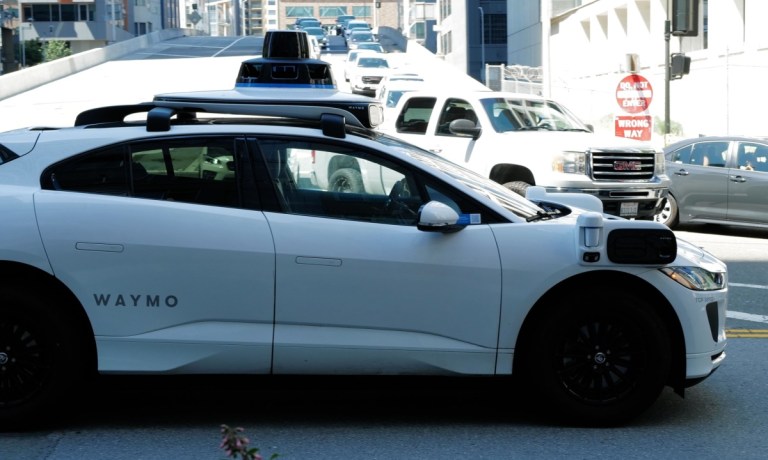
Fifteen years ago, Uber disrupted and transformed ride hailing.
Uber, one of the platform economy’s original giants, announced Thursday (Aug. 29) that is making a strategic investment in autonomous driving software provider Wayve, agreeing to put self-driving vehicles powered by Wayve’s software on the Uber platform in multiple markets around the world — at a date to be determined. Observers are wondering whether robotaxis represent the tip of autonomous and self-driving innovation.
“Wayve’s advanced embodied AI [artificial intelligence] approach holds a ton of promise as we work towards a world where modern vehicles are shared, electric and autonomous,” Uber CEO Dara Khosrowshahi said.
Still, Uber and Wayve are far from the only companies pushing ahead with robotaxi initiatives. As recently as Tuesday (Aug. 27), Google-owned Waymo began offering 24/7 robotaxi service at the Phoenix Sky Harbor International Airport.
And it’s all happening as Tesla is planning, at least according to the firm’s latest timeline, to launch its own robotaxi in just a few weeks, this October. Of course, Tesla CEO Elon Musk had earlier predicted in 2019 that Tesla would launch a robotaxi by 2020.
These companies have poured billions into developing self-driving vehicle technologies, each vying for a piece of what they believe will be a lucrative market. But a critical question arises: Are robotaxis truly the future of self-driving cars, or is the promise of fully autonomous transportation still more hype than reality?
Read more: Google’s $5 Billion Bet on the Bumpy Road to Self-Driving Cars
Autonomous vehicles (AVs) have been heralded as a transformation for the transportation industry, promising safer roads, reduced congestion, and enhanced mobility for all. Central to this vision is robotaxis — self-driving vehicles that operate as ride-hailing services.
The robotaxi embodies the ideal of fully autonomous vehicles operating in a shared, on-demand economy. Theoretically, these vehicles could revolutionize urban transportation by offering a convenient, cost-effective alternative to car ownership.
Robotaxis are also commonly seen as a solution to the “first-mile/last-mile” problem in public transportation, providing a link between mass transit hubs and final destinations. This could lead to increased public transit use, reduced dependence on personal vehicles, and a more sustainable urban environment.
Despite the optimism surrounding robotaxis, the road to full autonomy has been anything but smooth. The development of self-driving technology is a complex and costly endeavor, requiring advancements in artificial intelligence, sensor technology, and vehicle-to-everything (V2X) communication. While companies like Waymo have achieved milestones — such as launching a fully autonomous ride-hailing service in select areas — these services are still limited in scope and geography.
Underscoring the challenges, Hyundai-backed self-driving car startup Motional announced in May that it was delaying its driverless taxi fleet, explaining that “large-scale deployment of AVs remains a goal for the future, not the present.”
Read also: From Factories to the Fast Lane, Unpacking Autonomy’s Potential
For robotaxis to be widely adopted, the payment process must be integrated into the ride-hailing experience. Users expect a frictionless, cashless payment system, similar to the embedded experience they enjoy across with current ride-hailing platforms.
With the absence of a human driver, robotaxis might need to incorporate autonomous transaction systems for additional services, such as in-ride purchases (e.g., snacks, entertainment, Wi-Fi). The vehicle itself could act as a point-of-sale terminal, processing transactions automatically.
“It’s a new market. We do not have transactions right now inside cars. None of us are familiar with what it would even mean. Therefore, when we talk about launching a new category like in-vehicle payments, we have to make it as convenient as our existing payment methods,” Evgeny Klochikhin, founder and CEO at Sheeva.AI, for the “AI Effect” series.
And payments could play a vital role in the business-to-business (B2B) aspect of robotaxis, particularly in managing fleet operations. This includes payments for maintenance services, fuel or energy (in the case of electric vehicles), and other logistical expenses. Automated payment systems that handle these transactions efficiently are critical to keeping the fleet operational and cost-effective.
Ultimately, payments in robotaxis aren’t just about the ride itself. The data generated by these vehicles — such as user preferences, travel patterns, and in-vehicle purchases — can be monetized. Companies might develop new revenue streams by selling anonymized data to third parties or using it to offer targeted services and advertising, all of which require a robust payment infrastructure.